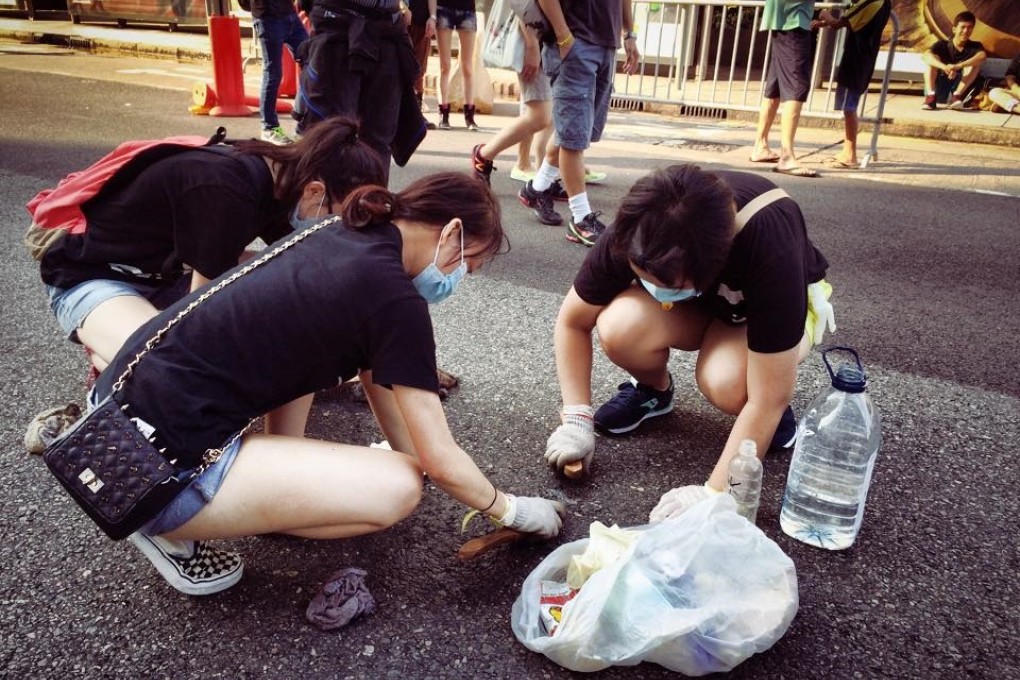
It was Day 3 of Occupy Central, now known across the globe as the Umbrella Revolution. Umbrellas and raincoats, perhaps the humblest of all household objects, have been thrust onto the world stage, as have the tens of thousands of teenage students who had used them to fend off a police crackdown on Sunday. Tonight, their trusty rain gear would be needed once again – the Hong Kong Observatory had just issued the “amber” rain alert for the coming thunderstorm.
I changed out of my work clothes in the office and walked to Admiralty, the de facto nerve centre of the student-led movement demanding the right to choose our own leader. Deep in the crowd, I spotted my brother Kelvin and his wife listening quietly to a student speaker at the microphone. It was a small miracle that I found the two, as they were swarmed by people as far as the eyes could see, all dressed in black. No one knew how many more had come out tonight – nor did anyone really care. Public turnout normally matters a great deal to protest organisers because it is a measure of their success. But not this time. This time we don’t need a number to tell us that.
A few minutes into our sit-in, volunteers carrying bulging plastic bags stopped by and offered us crackers and tissue paper. There were dozens of them patrolling up and down the aisle, handing out anything from snacks and drinks to paper fans and face towels. Others were collecting garbage and cooling down the crowds with mist sprayers. I felt parched from the stifling heat and asked for water. Five people jumped at my request and came charging toward me with water bottles. I took one from the student nearest me, who then thanked me for accepting his water and reminded me to recycle the plastic bottle at the drop-off tent down the road.
There is a renewed sense of neighbourhood in Hong Kong, something we haven’t seen since the city transformed from a cottage industry economy to a gleaming financial centre. But all over the protest zones – in Admiralty, Central, Causeway Bay and Mongkok – micro-communities have emerged where the air is clean (traffic has all but vanished), people smile (replacing that permanent frown from big city stress) and everyone helps each other without wanting anything in return (we have a bad rap among fellow Asians for being calculating). This is the Hong Kong we love and miss. This is the Hong Kong I grew up in.

Suddenly, we heard loud claps of thunder and it started to pour. Umbrellas popped open like a time-lapse video of flowers in bloom. Everyone stayed where they were, as raincoats and more umbrellas began to circulate among the crowds. Someone joked that the gods were coming for CY Leung and we all laughed. Once the storm passed, volunteers spontaneously deployed brooms and squeegees to remove water puddles. There were no leaders to give orders, because none was needed. Since the Sunday crackdown, Occupy Central has evolved into a bottom- up campaign based on the self-discipline and volunteerism of individual citizens.
No wonder the foreign press has dubbed this “the most civilised street protest in the world.” Our tourism board spends tens of millions every year promoting Hong Kong as “Asia’s World City.” Ironically, all it took to put us on the world map was a bunch of teenagers doing what was natural to them. This place is much more than just shopping malls and restaurants – we now have our young people to brag about.
